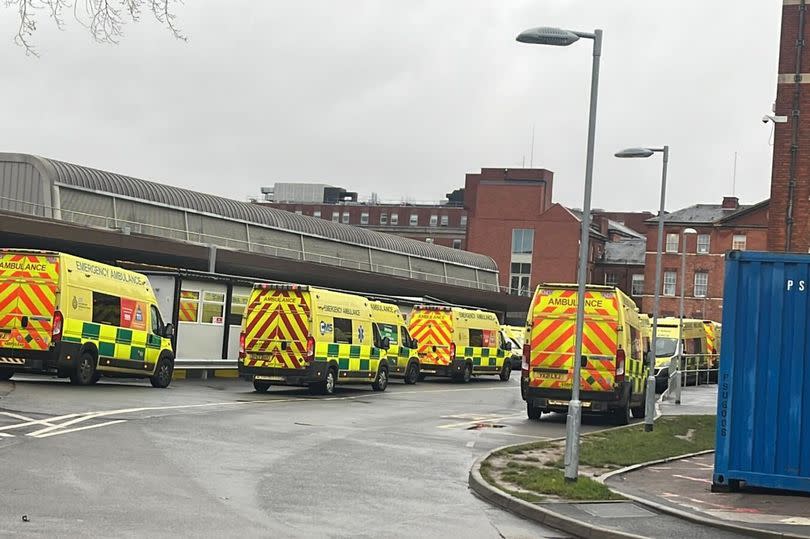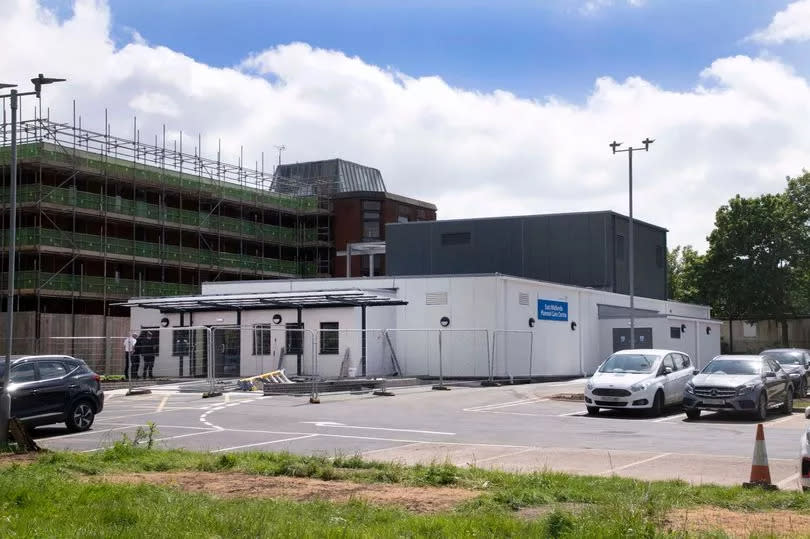Leicester hospitals boss apologises to patients over care delays but insists progress has been made

Leicester hospitals have debriefed councillors on the challenges and improvements made in local care. Jon Melbourne addressed members of Leicester City Council’s health committee this week, starting with an apology to those who have been left waiting too long for treatment.
The chief operating officer at the University Hospitals of Leicester NHS Trust (UHL), which is responsible for the city’s three hospitals, said progress was made last year compared to the trust’s performance in 2022. However, Mr Melbourne added local healthcare bosses “absolutely don’t accept where [they] are”.
The committee meeting came shortly after new data revealed thousands of patients, many of them elderly, had been left waiting in Leicester Royal Infirmary’s emergency department for more than 24 hours last year. The most recent data snapshot from NHS England also outed East Midlands Ambulance Service (EMAS) as the second worst ambulance service in the country when it came to responding to the most urgent calls.
READ MORE: Scathing appeal launched against councillors' refusal of massive Leicestershire logistics hub
That data also painted a stark picture for Leicester’s hospitals. UHL not only failed to meet targets for patient waits at A&E in March and elective treatment and cancer care waits in February – the most recent data available – it was also below the national average in all three areas.
Mr Melbourne told councillors: “We are very clear there are patients, people, waiting for too long on both our planned care and our urgent and emergency care pathways. I apologise sincerely to anyone who has waited for too long.
“While we can present areas of progress and improvement, we absolutely don’t accept where we are. That is the motivator for us, this year and in the years to come, to continue to significantly improve our waiting times across Leicester, Leicestershire and Rutland.”
However, he said the trust has made significant improvements since the pandemic, which saw the number of patients on waiting lists for care at Leicester hospitals increase by 87 per cent. At the time, Leicester was placed into tier one – the most challenged level – for urgent and emergency care, planned care, and cancer care.
Last year, urgent and emergency care was reallocated to tier three – the least challenged level – and cancer and planned care to tier two. Mr Melbourne said he hopes to bring those two services down to tier one also.
There was a 60 per cent reduction in the number of patients waiting more than the 62 day target for cancer treatment last year, he added. There was also a drop of 77 per cent in the number waiting for elective – or non-emergency – care, he said.
This latter statistic was the “biggest reduction” across NHS England services. Diagnostic waits of more than six weeks dropped by 71 per cent and, for waits of more than 13 weeks, by 80 per cent.
Mr Melbourne said: “Our waiting list is still much longer than we would like, but we are objectively making nationally leading progress in reducing [it]. That doesn’t mean we accept where we are.”
For urgent and emergency care, he said ambulance handover times – how long patients were waiting in the back of an ambulance to be admitted to the emergency department – show “significant progress” every month in 2023 compared to the same month in 2022.
However, he said it had been a “challenged winter” and accepted people were still waiting too long in A&E. “We have a significant number of people every day awaiting a bed in our hospitals,” he added.
The trust is working to ensure it has the right care capacity in the right areas of the hospital, he continued, and that people were in the right place for the care they need. The trust has also been working to ensure the emergency department is equipped to deal with the longer waits, Mr Melbourne said. The hospitals have introduced medical teams into A&E who can progress care while people wait.
There are also works ongoing within the hospitals estate to create more treatment spaces for patients. These include the Hinckley Community Diagnostics Centre, which will feature facilities including MRI, CT scanning, X-Rays, and physiological measurements on the ground floor, with a new endoscopy suite taking up the first floor including endoscopy procedure and private recovery rooms.
The East Midlands Planned Care Centre is also progressing and is expected to treat 100,000 patients a year when the second phase is complete. Mr Melbourne said he was “impatient for improvement” and “confident” plans were in place to do so.

One of the councillors on the board, Liz Sahu, asked at what point would the trust consider the progress to be complete. Mr Melbourne said: “It will never be good enough, we’re dealing with people’s lives here.
“When we get down to 18 weeks [for elective care waits], I will strive for better than 18 weeks. When we get down to 62 days for cancer, I will strive for better than that because that will improve people’s lives.
“I do think we can be proud of the progress we’ve made. I don’t think it’s contradictory to say it’s not good enough where we are and that we can be proud of the progress we have made. What we’re doing is year on year planning to improve.
“So this time next year, I hope to be sat in front of you saying we have no one waiting over 52 weeks for their care across Leicestershire. I don’t believe I’ll be sat here saying it’s 18 weeks for a few more years because that’s the level of the challenge we have ahead.”
We are now bringing you the latest updates on WhatsApp first

 Yahoo News
Yahoo News 
